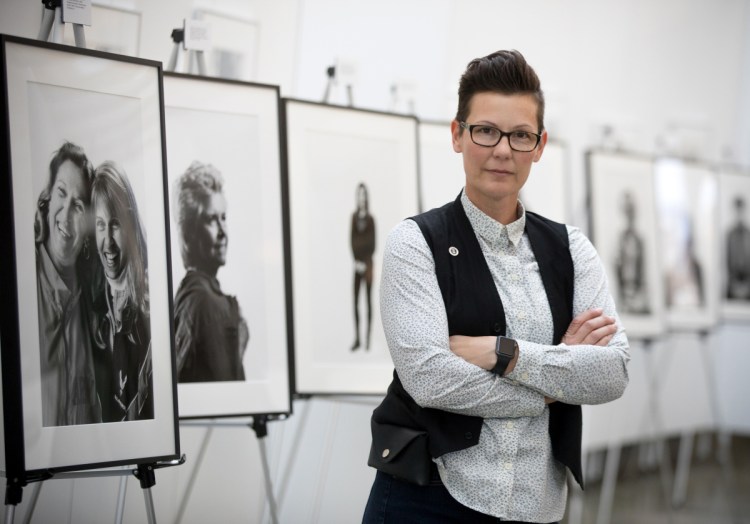Stacy Pearsall was frustrated, demoralized and in pain in 2008 the day she arrived for yet another appointment at a Department of Veterans Affairs hospital. A combat photographer for the Air Force, she had sustained injuries in roadside bombings and an ambush in Iraq, leaving her with neurological, psychological and physical problems. At 28, she could no longer run or lift anything over five pounds, and doctors had said her career as a war photographer was over.
In the waiting room, an older veteran seated beside her engaged her in conversation. “He told me about surviving Normandy and liberating a concentration camp,” she said. His stories managed to pull her up from her well of misery.
“I realized that others at the VA had so many important stories,” she said. “I realized that I didn’t need to be in a uniform to serve my community.”
Instead, she could do it through taking their pictures. The Ralph H. Johnson VA Medical Center in Charleston, South Carolina, where she lives, let her set up a small studio in the waiting room and she began taking pictures of veterans who came through and were interested in sitting for a portrait. In the past decade, she has expanded to around 7,500 veterans in 29 states, a sprawling, ongoing undertaking called the Veterans Portrait Project.
A selection of her portraits of female veterans, “Shooter: Combat From Behind the Camera,” opened this weekend at the Women in Military Service for America Memorial at Arlington National Cemetery.
For Pearsall, now 38, it is the culmination of a journey that took her from feeling invisible to feeling connected to a multigenerational network of veterans throughout the nation.
Because of her gender and age, she often felt ignored when trying to navigate the system to get help with her combat injuries.
“Young women like myself are very much an anomaly in the VA,” Pearsall said. “A lot of people would ask if I was part of the hospital staff.”
In photographing veterans around the country, Pearsall hopes to illustrate how diverse the community is.
The portraits live on a website that is constantly being updated (Pearsall plans to eventually visit all 50 states). Around nine in 10 are of men, reflecting the disproportionate portion of men in the military. But the 21 portraits on display at the Women’s Memorial are of women, whose service ranges from the 1960s to the present.
One of the subjects, Shari Strobel of Derwood, Maryland, enlisted in the Marines as soon as she turned 18, as the Vietnam War was winding down. Serving at Quantico, she faced skepticism from a superior.
“Times were different,” she said. “He did not believe that women belonged in the corps. I did my job and then I went beyond. It’s the old adage, that women have to work twice as hard to get half as far.” Eventually, she said, his skepticism faded and he complimented her when she got promoted.
Now when Strobel, 62, sees a woman in uniform, it’s a good feeling. “Hopefully, I was a poke in the eye that showed that women could serve, and hopefully, I made it a little easier for the women that came behind me.”
Send questions/comments to the editors.


